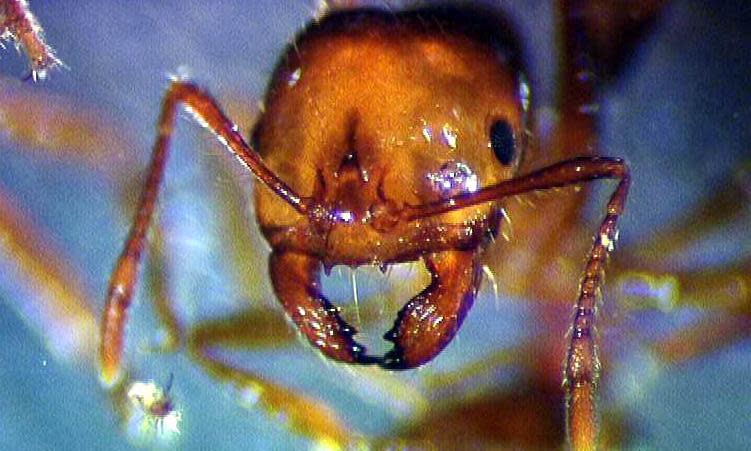Australian program to eradicate red fire ants is a ‘shambles’, Senate inquiry told

A Senate inquiry into the spread of fire ants in Australia has heard that the government program tasked with their elimination is an “absolute shambles” and that an independent eradication body is urgently needed.
The highly invasive insect is believed to have entered Australia in the 1990s and was discovered at Brisbane port in 2001. A program spanning state, territory and federal governments was created to eradicate red imported fire ants and it has received more than $1.2bn of federal and state funding. Of that, $593m covers 2023 to 2027.
Related: What are fire ants, and what will happen if these tiny killers take hold across Australia?
But the program was heavily criticised by stakeholders, academics, local government and community members on the first day of public hearings in Brisbane on Monday, with delays in funding blamed for allowing the insects to spread to more than 700,000 hectares in south-east Queensland and for recent outbreaks in northern New South Wales.
A lack of transparency and wastefulness within the program were also detailed, with a 2021 strategic review not made public until two years after its completion, the committee, chaired by Nationals senator Matt Canavan, heard.
When asked by Peter Whish-Wilson of the Greeens why the report’s publication – which mentioned the word “urgent” 18 times – was delayed until 2023, Dr Helen Scott-Orr, who led the review, said she had “no idea” and was “extremely frustrated”.
“My understanding is it would not have been released at all had there not been the threat it would be leaked,” said Whish-Wilson.
The ants are native to parts of South America and can kill people and livestock, as well as causing damage to infrastructure and ecosystems. Platypus, echidna and koalas are particularly vulnerable, according to the federal environment department.
Stephen Ware, executive director of the Australian Environmental Pest Managers Association, described learning that the program bought 85 new vehicles during the Covid pandemic because of social distancing rules.
The scope of the problem was immense, the committee heard. Should the ants spread through Australia’s habitat, the impact would be worse than the combined effects of rabbits, cane toads, foxes, camels, wild dogs and feral cats. Up to 650,000 Australians could be stung each year and the beef industry could be slashed by 40%.
The eradication objective is so large, said Richard Shannon, who formerly worked on the program, that “it’s the equivalent of putting man on the moon”.
“We are further away from eradication than we were five or six years ago when I was part of the program,” he said, adding that it was “too clandestine”.
“The national fire ant eradication program has been a complete shambles,” Dr Pam Swepson told the committee.
The inquiry is the first time stakeholders have been able to give formal feedback on the program.
Officials from the Gold Coast said the ant was “the greatest existential threat” top the city’s lifestyle and that aspects of the program had been “diabolical.”
Attempts by Gold Coast council to share data around the location and treatments of nests with the program had been unsuccessful, the committee heard. According to the city’s submission, the number of Gold Coast suburbs infested by the ants had risen from 17 in 2016 to 76 in 2023.
Jack Gough of the Invasive Species Council saidthe ants “will probably go down in history as one of the most devastating” invasive species.
He is one of a number of witnesses who called for local government funding for fire ants eradication, as well as the formation of a fire ants authority that sits separately to government and has full independence, similar to an Olympics delivery authority.
It should work with environment, health and agriculture ministers around the country, as well as advocate for itself and be transparent, the council urged.
When asked why the ants had notbeen eradicated, Ashley Bacon, program executive from the national program, said the matter was “really complicated”.
“It’s a highly complex program and we’re dealing with something that is biological and evolves,” he told the panel.
Lessons learnt from the past 20 or so years were being put into practice and eradication was “the only option to maintain the Australian way of life”, he said.
“Things are happening [in the program] that we don’t understand – and we are allies,” the Invasive Species Council’s Reece Pianta said after he was heard by the committee on Monday. “The program needs an overhaul - we’re here to help, let us help.”
Hearings will continue in Newcastle on Tuesday and in Canberra later in the month.


